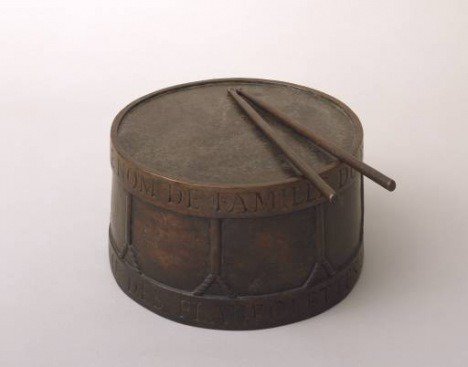Ian Hamilton Finlay
dal 11/11/2012 al 16/2/2013
Segnalato da
11/11/2012
Ian Hamilton Finlay
Tate Britain, London
His sculptures play with the juxtaposition of words and images. The display will include 24 works incorporating sculpture in wood, neon, bronze, ceramic and stone as well as prints alongside books and cards.

Tate Britain presents a major Ian Hamilton Finlay (1925-2006) display which will be unveiled in the Duveens Galleries on 12 November as part of the BP British Art Displays. One of the most original and important artists of the twentieth century – and early in his career Britain’s foremost concrete poet – Finlay’s sculptures play with the juxtaposition of words and images. The display will include 24 works incorporating sculpture in wood, neon, bronze, ceramic and stone as well as prints alongside books and cards.
Ian Hamilton Finlay initially made his reputation publishing plays, short stories and poems in the mid-1950s. In 1963 he published his first collection of concrete poetry, at the same time as he initiated a move from the printed page into making sculptures. He came to use a range of materials to convey his poems using both words and images. The wood sculpture, Starlit Waters 1967 is an early example of this approach. Covered in a yellow net that alludes to both a fishing boat and to the starlight that studs the night air, the title of the work and its physical form are inextricably linked.
Highlights of the display include the imposing seven-metre long work, The World Has Been Empty Since the Romans 1985. Suspended from chains against the west wall of the South Duveens Gallery, six fragments of Bath stone hang together to form a broken frieze containing words taken from a speech made by French revolutionary Louis-Antoine de Saint-Just. This combination of the language and principles of Neo-Classicism with the social and political upheavals of the French Revolution recurs frequently in the artist’s work.
Hamilton Finlay’s work is characterised by contradictory impulses: liberty and terror, virtue and violence. In Flute1991, a machine gun evokes both Saint-Just’s own ivory flute and the flute of Virgil, the vents of the gun standing in for the flute’s finger holes. Finlay observed how ‘The Life of Saint-Just was a duet between the blade and the flute.’
Among the other key works will be the striking neon sculpture Je Vous Salue Marat 1989 and A Wartime Garden 1989, which consists of twenty-four stone carvings. Two further sculptures play on the theme of the fishing boat, Lead Us 1968 and Inscribed Glass Float and Nets c. 1968.
Ian Hamilton Finlay was born in the Bahamas in 1925. In 1961 he founded the Wild Hawthorn Press and in 1966 he began to transform a farm in Stonypath near Edinburgh into a unique garden, which he named Little Sparta, in reference to Sparta’s conflict with Athens and as an allegory for the relationship between artist and establishment. Comprised of works from the Tate Collection, this display will coincide with Finlay’s inclusion in the 13th Sao Paulo Bienal. The display is curated by Andrew Wilson, Curator Modern & Contemporary British Art at Tate Britain.
BP’s support for UK Arts & Culture
BP has supported arts and culture in the UK for over 30 years and currently focuses its support on long-term partnerships with four world class institutions; The British Museum, The National Portrait Gallery, The Royal Opera House and Tate Britain. More than 3 million people across the UK engaged with BP supported activity in 2011.
Image: Drum, 1991 © The estate of Ian Hamilton Finlay
For further information contact Alexandra Jacobs, Tate Press Office on 020 7887 8732 / 8730 or email pressoffice@tate.org.uk.
Tate Britain
Millbank London SW1P 4RG
Open daily 10.00 – 18.00 and until 22.00 every Friday
Admission Free



